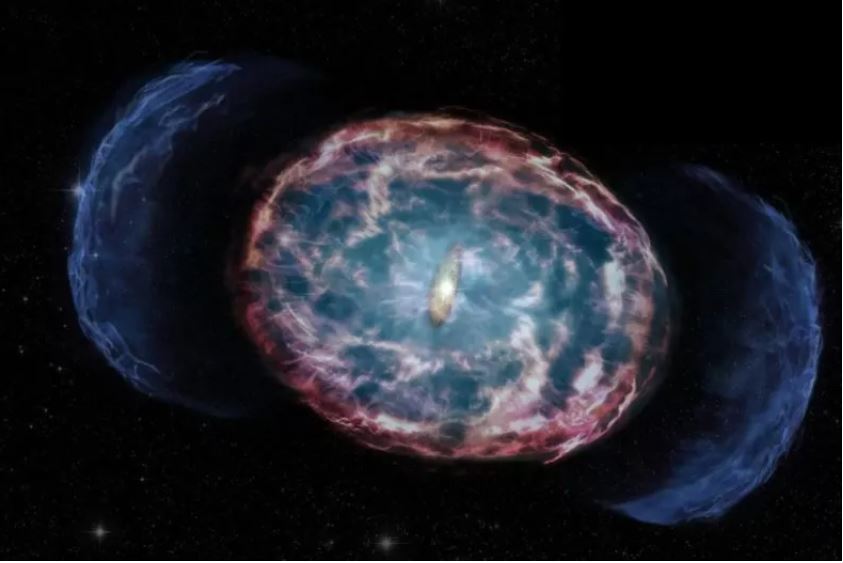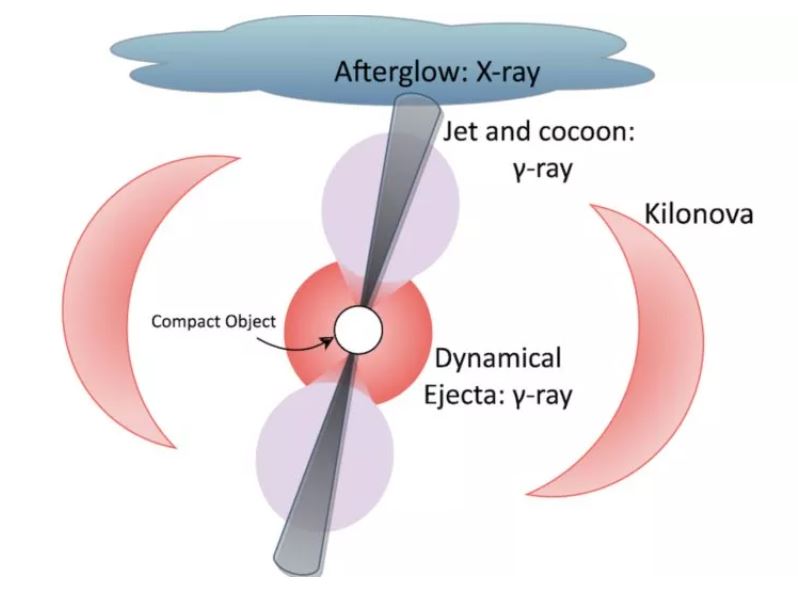
if Land Scientists estimate that finding a planet very close to the collision of two neutron stars could destroy it. When two neutron stars collide, an absolutely amazing explosion occurs and this cosmic phenomenon is called a kilonova. The explosion releases huge amounts of energy in the form of electromagnetic radiation and cosmic rays.
If Earth happened to be in the firing line of a beam of this intense radiation, life on our planet could be destroyed, according to a new report. New publication in the Astrophysical Journal. However, Earth would have to be close enough to a kilonova to endanger life on it. On the other hand, the safety distance varies depending on the type of radiation that can strike the Earth and us.
Planets are in danger
“Binary neutron star mergers produce high-energy emissions from a variety of physical sources, including a gamma-ray burst (GRB) and its afterglow, kilonovas (KN), and, at more distant times, remnants the size of several parsecs. (Note: a parsec is a unit Length (distance) in astronomy. It corresponds to about 3.26 light-years, which is about 30.9 trillion (3.09 x 1013) kilometers.) Ionizing radiation from these sources can pose a threat to life Earth-like planets when they are very close“, the authors write in their paper.
Kilonovas are massive explosions, larger than supernovas, that occur when two neutron stars or a neutron star and a black hole collide. They emit high-energy gamma rays, which are dangerous in themselves, but these gamma (c) rays can also collide with cosmic gas and dust and heat them, producing powerful X-ray afterglows. These X-rays may also be life-threatening. On the ground. Kilonovae also send out shock waves known as remnants, which can trigger cosmic ray emission from gas and dust in the shock wave firing line.
The ozone layer on the planet is being destroyed
All three types of radiation are dangerous:
“If they are close enough, the gamma-ray emission will ionize the atmosphere, causing EM [ηλεκτρομαγνητικό] Pulse throughout the hemisphere. In addition, astronauts on the International Space Station or the Moon would be exposed to gamma rays and cosmic rays without the protection of the atmosphere.
“Cosmic rays would cause astronauts to experience powerful flashes of light while closing their eyes, as happened to the Apollo astronauts,” the scientists wrote in their paper. “For those living on Earth, it will be difficult to avoid muons (unstable elementary particles, heavier than electrons) produced in the atmosphere that have been found to cause mutations and birth defects.”

The specific kilonova examined in the study, known as GW170817, is located about 130 million light-years from Earth, and was first observed in 2017, when gravitational waves were detected emanating from two colliding neutron stars, sending ripples through spacetime.
The optical and gravitational data collected allowed scientists to estimate the potential energy released by these kilonovas and calculate the minimum distance our planet would need to be safe from a kilonova.
Safe planets
So the researchers determined that a kilonova would have to be 3 light-years from Earth to be affected by the X-ray flare, and 13 light-years away to suffer the devastating effects of gamma rays. The effects of cosmic rays spread even further and will be dangerous at a distance of 36 light-years.
However, fortunately for us, a kilonova is unlikely to occur at these distances from us any time soon. “Gamma-ray bursts are flashes of high-energy radiation that originate from astrophysical sources spread throughout the universe. The flashes are often very short, typically lasting from milliseconds to minutes. They are flashes of high-energy radiation that originate from astrophysical sources scattered throughout the universe. The flashes are often very short, typically lasting from milliseconds to minutes,” said Andrew Klekosiuk, an atmospheric scientist at the climate program. In Antarctica, according to Newsweek: “These flashes are not directly visible from the Earth's surface, as the atmosphere absorbs the radiation.”
Why is planet Earth not in danger?
“They have rarely happened during Earth's history. Maybe that's why we're here, as a nearby event could be harmful to life, and cause a sudden change in the protection provided by the ozone layer.”
“Rare mergers (conflicts) in BNS. [δυαδικών αστέρων νετρονίων] Combined with the small scale of fatalities means they probably do not pose a significant threat to life on Earth. “We find that the average recurrence time of lethal explosions at the position of the Sun is much longer than the age of the Universe,” the authors wrote in their paper.
If an explosion occurred beyond these distances but was still close enough, it could have effects on Earth and our civilization.
“However, even if it does not cause a mass extinction of life, it is a near-CN event [kilonova] It will be visible on the ground. “It will likely cause disruption in cutting-edge technology applications immediately after the merger (impact) and will remain bright in the sky for more than a month,” the authors wrote.
The danger to planets that could develop life
In regions of the galaxy that are likely to experience neutron star mergers that lead to kilonovas, the chances of life evolving could be destroyed by the powerful radiation emitted. However, this is also unlikely, as other cosmic events such as supernovas pose a greater risk.
“We conclude that visible off-axis mergers (collisions) are unlikely to affect life on Earth in a significant way, and are also unlikely to disrupt potential life elsewhere in the Milky Way,” the authors wrote. “
[Προηγούμενες έρευνες] He described four galactic components, both of which likely contained progenitors of BNS mergers, the halo and the thick disk, too metal-poor to host planets with life. We also note that if there is life in the galactic bulge, which hosts the highest concentration of stars, SNe[نجوم المستعرات الأعظم]It is the main threat.” [τααστέριασούπερνόβα)αποτελούντηνκύριααπειλή”
“Total alcohol fanatic. Coffee junkie. Amateur twitter evangelist. Wannabe zombie enthusiast.”





More Stories
NASA: Signs of ancient life on Mars found in Chiava rock
Motorola Razr 50 Ultra Review – Review
6 Phrases That Show You’re Mentally Stronger Than Most People